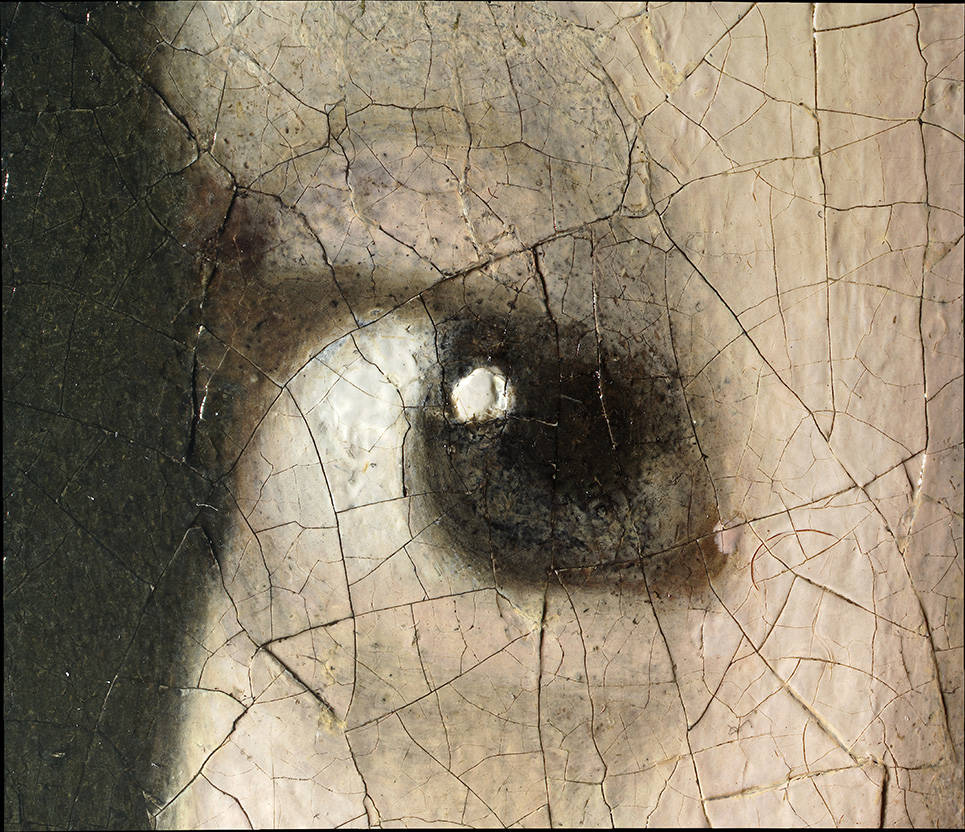Pearl earring
Our eye is drawn to the pearl – not only because it is the painting’s namesake, but because Vermeer placed it at the centre of the composition. Did you know that it might not be a pearl at all? Costume and jewellery specialists believe that it’s too big to be real. Perhaps Vermeer exaggerated it a little to make it more of a focal point of the painting. Perhaps it was an imitation pearl made out of glass (like those made in Venice), silver, lacquered tin, or mother of pearl. There is no ‘hanger’ attaching the pearl to her ear.
At high magnification, you can see that Vermeer painted the pearl with only a few brushstrokes of lead white. On top of the shadow of the Girl’s neck, he applied a thin grey scumble to lay in the shape of the pearl. He applied lead white more thickly to make the crisp droplet-shaped highlight towards the top.
The thick highlight was affected by later restorations. It might have been ‘flattened’ during the lining treatments. Also, remember the story about the ‘second highlight’ that was actually an upside-down paint fragment?






